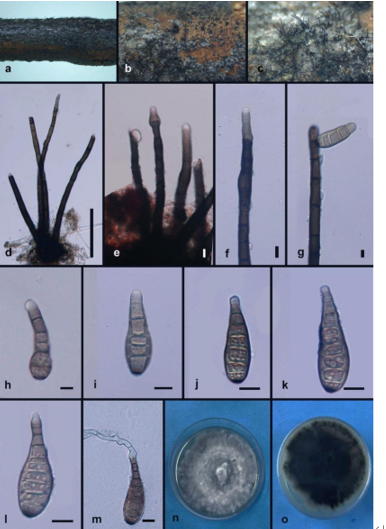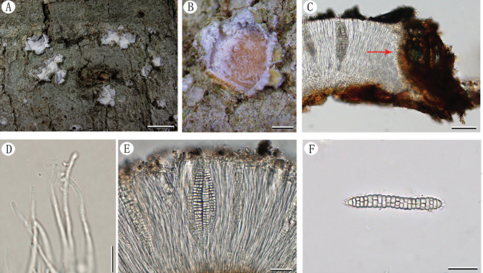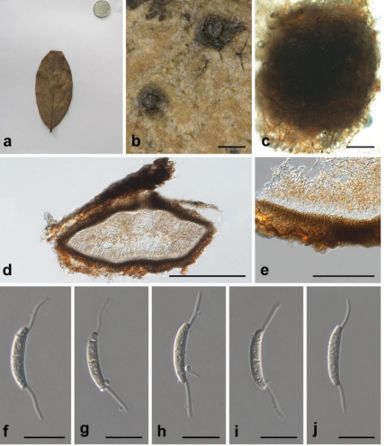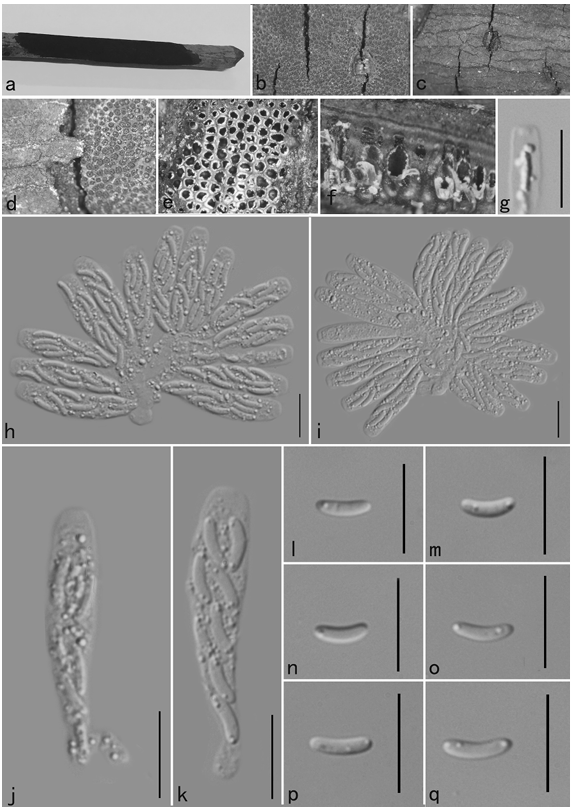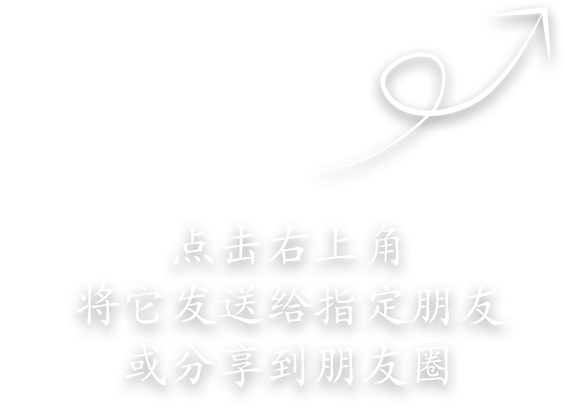Sugiyamaella yunanensis C.Y. Chai & F.L. Hui, sp. nov.2021
MycoBank:835004
Type: China, Yunnan Province, Jinghong City, Mengyang Town, in rotting wood from a tropical rainforest, July 2016, K.F. Liu & L. Zhang (holotype NYNU 161059T, culture ex-type CBS 14701).
Morphological Description
Sexual morph:Undetermined
Asexual morph:The cells are ovoid to elongate (2.5–5.5 × 3–7.5 μm) and occur sin gly or in pairs after being placed in YM broth for 3 days at 25 °C. Budding is multilateral. After 3 days of growth on YM agar at 25 °C, the colonies are white to cream-coloured, buttery and smooth, with entire margins. After 7 days at 25 °C on a Dalmau plate culture with CM agar, hyphae and blastoconidia are formed. Asci or signs of conjugation were not observed on sporulation media. Glucose and d xylose are weakly fermented. Glucose, galactose, l-sorbose, d-glucosamine, d-xylose, l-arabinose, d-arabinose, sucrose, maltose, trehalose, methyl α-d-glucoside, cellobiose, salicin, arbutin, melibiose, raffinose, inulin, ribitol, d-glucitol, d-mannitol, d-gluco no-1, 5-lactone, 2-keto-d-gluconate, d-gluconate, d-glucuronate, dl-lactate, succinate, citrate and ethanol are assimilated. No growth was observed in d-ribose, l-rhamnose, lactose, melezitose, glycerol, erythritol, xylitol, galactitol, myo-inositol or methanol. In nitrogen-assimilation tests, growth is present on nitrate, nitrite, l-lysine and glucosa mine, while growth is absent on ethylamine, cadaverine, creatine, creatinine, imidazole and d-tryptophan. Growth is observed at 37 °C, but not at 40 °C. Growth in the pres ence of 0.01% cycloheximide is present, but growth in the presence of 10% sodium chloride (NaCl) with 5% glucose and 1% acetic acid is absent. Starch-like compounds are not produced. Urease activity and diazonium blue B reactions are negative.
Culture:Undetermined
Habitat:Undetermined
Distribution:China
GenBankAccessions: holotype NYNU 161059T (ITS: MT257259; nrLSU D1/D2: MT257257); additional isolate NYNU 16113 (ITS: MT257256; nrLSU D1/D2: MT257261);
Notes: Two isolates, representing S. yunanensis, are retrieved in a well-supported clade and appear most closely related to S. valdiviana. Sugiyamaella yunanensis can be distinguished from S. valdiviana, based on ITS and nrLSU D1/D2 loci (6/510 in ITS and 7/557 in nrLSU D1/D2). Physiologically, S. yunanensis differs from S. val diviana by its ability to assimilate inulin and dl-lactate and its inability to assimilate melezitose, glycerol and myo-inositol. Additionally, S. valdiviana grows in the presence of 0.1% cycloheximide, while S. yunanensis does not (Kurtzman 2007).
Reference: [1] Shi, C. F. , Zhang, K. H. , Chai, C. Y. , Yan, Z. L. , & Hui, F. L. . (2021). Diversity of the genus sugiyamaella and description of two new species from rotting wood in china. MycoKeys, 77, 27-39.
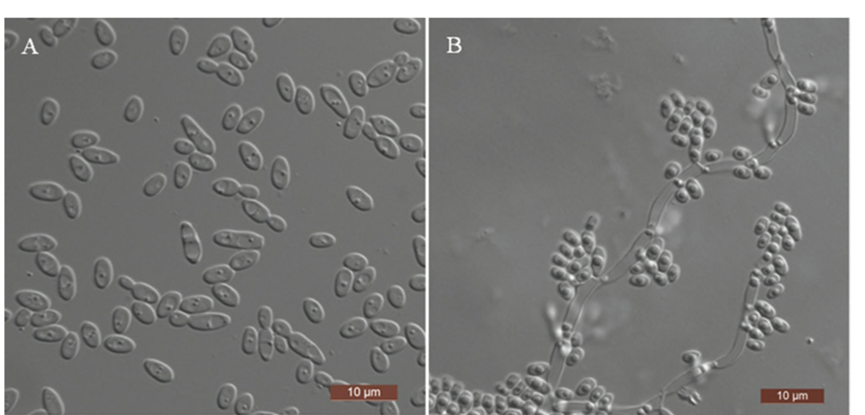
A budding cells after 3 days in YM broth at 25 °C B hyphae and blastoconidia on corn-meal agar after 7 days at 25 °C. Scale bars: 10 μm


